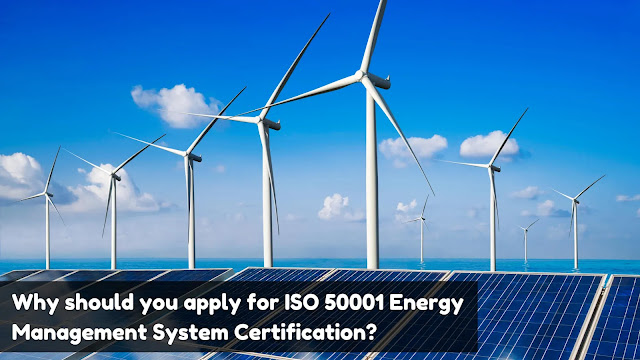Environmental
Sustainability – How Do You Define It?
The capacity to keep an equilibrium between the environment and
human activities is pointed to as environmental sustainability. The activities
within the sustainability program do not influence the ecosystem negatively.
Also, the use of EMS doesn’t impact future generations' ability to satisfy
various requirements. That is why both are referred to as being part of
environmental sustainability.
The motive of environmental sustainability involves making
decisions and taking steps. It starts with activities such as safeguarding,
restoring, and preserving natural resources within the natural world. This
involves eliminating waste, conserving resources, and utilizing sources of
clean energy such as wind, sunlight, and water.
With ISO 14001
Certification, an organization gets the proper idea about the
utilization of natural and limited resources. The certification also leads
industries to follow environmental sustainability programs for a better and
secure future.
What
Is the Role of ISO 14001 Certification in Environmental Sustainability?
ISO 14001 is an international standard that sets its targets to
implement environmental management systems (EMS) within organizations. The
standard helps businesses manage their environmental responsibilities. It
assists businesses in identifying, controlling, and minimizing their
environmental consequences.
The ISO 14001 Standards are responsible for setting environmental
objectives and targets. This certification confirms a company's commitment to
environmental sustainability and assists it in reducing its environmental
impacts.
ISO
14001 Environmental Sustainability is easier to
achieve while improving environmental performance, and increasing its
competitive edge. The ISO 14001 certification also aids in the development of
public trust, the improvement of stakeholder relationships, and increased
compliance with environmental rules.
For an organization, carrying out environmental sustainability
won’t be a difficult task unless they don’t follow the ISO 14001:2015 Standard
properly.
Activities
with EMS-Based Sustainability
1. Create and
Put in Place an Environmental Policy
An Environmental Management System (EMS) can assist businesses in
developing, documenting, and implementing effective environmental policies.
This policy should include a statement of commitment to environmental
protection as well as an overview of the organization's environmental aims and
ambitions.
2. Establish
Environmental Management Objectives and Goals
An EMS is the one assisting organization to develop the best and
most defined environmental goals. They carry various objectives that act as a
roadmap for the business to attain its environmental goals. These objectives
and goals must be explicit, quantifiable, attainable, relevant, and time-bound.
3. Develop an
Environmental Action Plan
An EMS can assist organizations to build an action plan. The
program holds a vital source as it accomplishes its environmental objectives
and targets. With this strategy, an organization can take precise steps and
understand the deadlines for implementing the EMS. You may need a list of
resources to complete the Environmental Action Plan.
4. Monitor
and Measure Progress
An EMS can assist companies while monitoring and measuring their
progress. Each step or progress should satisfy their environmental goals. This
involves frequent monitoring of environmental performance, identifying areas
for improvement, and taking remedial action as needed.
Practical
Opportunities of Environmental Sustainability
1.
Using
Recycled Products
ISO 14001
EMS talks about the proper use of natural resources and positive
interaction with the environment. If the manufacturers prefer the best
materials to produce various goods, then, these items can be recycled properly
for future usage. In that case, it maintains the sustainability rate properly
with the environment.
2.
Find
Out the Consumption of Materials and Resources
It is important to understand what kind of materials and resources
should be used to manufacture products. Sometimes, hard steps are better to
maintain sustainability. Manufacturers should prefer the less use of
carbon-contained products to eliminate the chances of carbon footprint. This is
the scenario when the industries can develop sustainability.
3.
Understand
the Lifespan of the Products
Once the organization designs its products based on the lifecycle
of the material, it will be easier for the environment. In some cases, those
used products can be recycled for future usage. Otherwise, the wasted elements
of the products will be degraded or decomposed properly following natural law.
This is an excellent way to increase sustainability.
4.
Find
Out the Positive Sides of the Products
ISO 14001:2015 Standard is meant to provide the best risk
management. That’s a positive and achievable sign to attain sustainability.
Once organizations understand how to eliminate various risk factors, it will be
easier for them to manufacture future-proofed items. Also, they can focus on
the EMS framework to improve sustainability performance.
Responsibilities Aligned with
Environmental Sustainability
If your organization has been complying with the ISO 14001 EMS, it will give a genuine and positive impact on the environment. Considering different factors like planning, risk management, knowledge about the EMS, awareness programs, and other relevant activities seem easier to achieve. Once the industry attains such benefits, it will be easier to maintain sustainability properly. You can consider this sustainability as an option for responsibility and opportunity.

